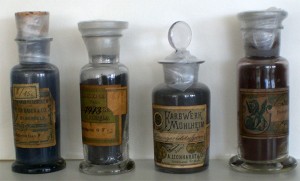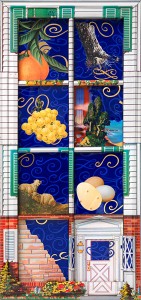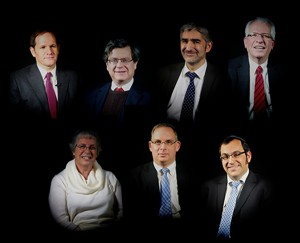A museum has a thousand objects in its possession, but sometimes just the right one is missing! Last winter when I was preparinga new showcase in the permanent exhibition on the Nobel Prize winner Paul Ehrlich, I didn’t have enough pieces to create a coherent presentation for the exhibit.
I wanted to illustrate Paul Ehrlich’s achievement in the field of medicine with documents and paraphernalia from his work, but didn’t find any appropriate objects in our collection. Nonetheless this significant scientist was to appear in our exhibition. He developed a cure for syphilis, founded modern cancer research, and brought many important, trendsetting research results to light.

Jars of dye that Paul Ehrlich needed for his famous experiments with dye, Paul Ehrlich Institute, Langen
© photo: Christiane Bauer, Jewish Museum Berlin
So I began to search for suitable exhibit pieces and found my way to Hessen: both the Paul Ehrlich Institute in Langen and the Georg Speyer House in Frankfurt – Paul Ehrlich’s last and most significant workplace – have an impressive store of items related to his work and influence. But how to bring these objects to the museum in Berlin? → continue reading

Seder Plate by Harriete Estel Berman, U.S.A., 2003 © photo: Jens Ziehe, Jewish Museum Berlin
Passover is not only a feast day evoking an historic event through a ritualized form of remembrance. It also appeals to reenact the exodus out of Egypt and envision divine mercy, freeing us from bondage and disenfranchisement. Like many Jewish holidays the original biblical Passover story has been and still is seen in relation to other historical events. The Egypt of the Exodus story turned into Ukraine and Belarus in the 17th century, when the Cossack chief Bogdan Chmielnicki allowed many hundreds of thousands of Jews to be murdered over the course of his struggle to liberate Poland. In the 20th century, Germany under the Nazi regime became the country to flee.
Through its culinarily-underscored recitation and discussion of the narrative, the seder provides a framework for each new re-interpretation. This appears primarily at the dinner: even while the symbolic dishes are determined by the Passover Haggadah, the other foods vary according to geography and the cultural conventions of the place where the celebration is taking place. There are especially numerous recipes for the “mortar,” the charoset, which resembles in color and texture the cementing agent used to build houses.
→ continue reading
Are we allowed to drive a car to synagogue services on Shabbat? If my father is Jewish and my mother is Christian, what am I? Can an uncircumcised man be Jewish?

Seven rabbis (left to right): Joshua Spinner, Irith Shillor, Daniel Katz, Julien-Chaim Soussan, Jonah Sievers, Avichai Apel, Gábor Lengyl
© Jewish Museum Berlin, photos: Thomas Valentin Harb
The new special exhibition, “The Whole Truth… everything you always wanted to know about Jews,” deals with common as well as uncommon questions about Judaism. We put some of these questions to seven rabbis and filmed their responses. All of them serve in Germany and represent a wide spectrum of religious belief: orthodox, liberal, conservative, progressive.
Inspired by research done on a number of Internet forums with names like “Ask the Rabbi,” “Askmoses,” and “Dear Rabbi,” in which rabbis from all over the world answer questions on how to handle religious law in everyday life, we organized the shooting of this film → continue reading


